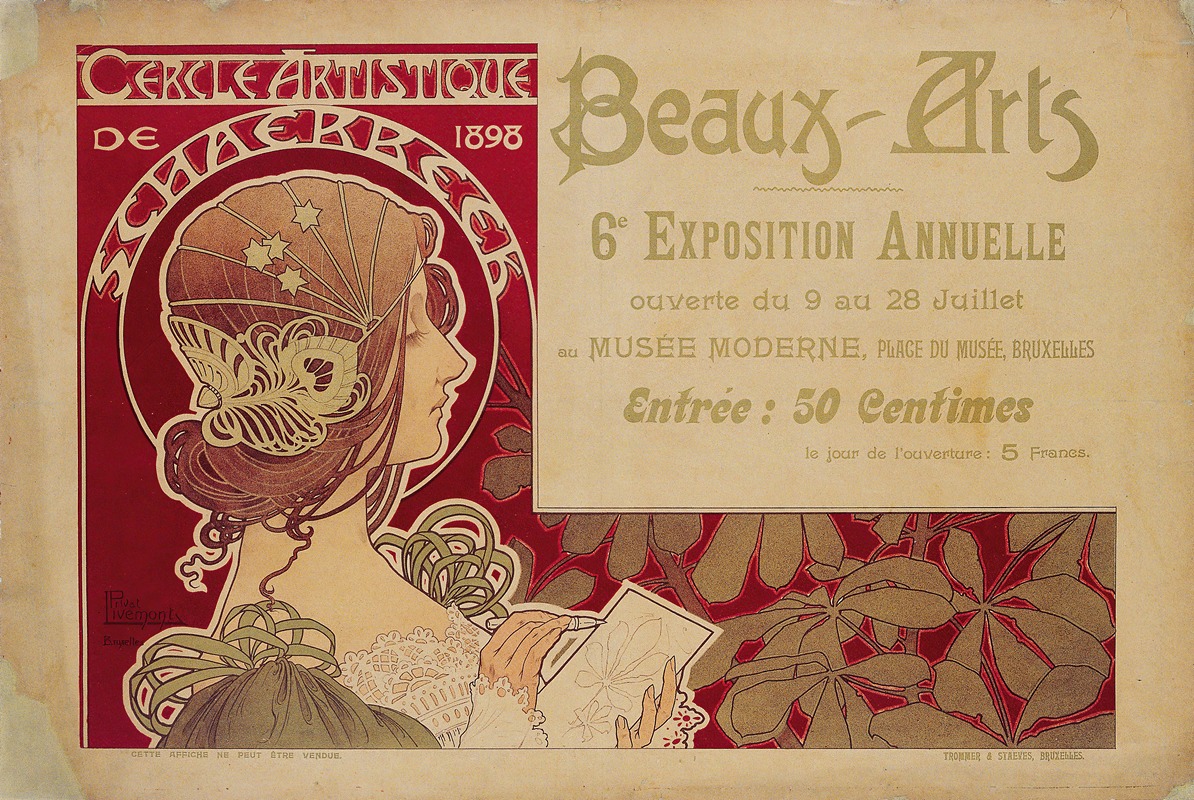
Cercle Artistique De Schaerbeek
A hand-painted replica of Henri Privat-Livemont’s masterpiece Cercle Artistique De Schaerbeek, meticulously crafted by professional artists to capture the true essence of the original. Each piece is created with museum-quality canvas and rare mineral pigments, carefully painted by experienced artists with delicate brushstrokes and rich, layered colors to perfectly recreate the texture of the original artwork. Unlike machine-printed reproductions, this hand-painted version brings the painting to life, infused with the artist’s emotions and skill in every stroke. Whether for personal collection or home decoration, it instantly elevates the artistic atmosphere of any space.
Henri Privat-Livemont was a Belgian artist renowned for his work in the Art Nouveau style, particularly his posters and decorative panels. One of his notable works is the poster for the Cercle Artistique de Schaerbeek, an artistic society based in Schaerbeek, a district in Brussels, Belgium. This piece exemplifies the elegance and intricate design characteristic of the Art Nouveau movement, which flourished in the late 19th and early 20th centuries.
The Cercle Artistique de Schaerbeek was an organization that played a significant role in promoting the arts within the Schaerbeek community. It provided a platform for artists to exhibit their work and engage with the public, fostering a vibrant cultural scene. The society was part of a broader trend during this period, where local art circles and societies emerged across Europe, aiming to support artists and cultivate an appreciation for the arts among the general populace.
Privat-Livemont's poster for the Cercle Artistique de Schaerbeek is a testament to his skill in combining artistic beauty with promotional intent. The poster likely served as an advertisement for an exhibition or event organized by the society, capturing the attention of passersby with its striking visual appeal. Art Nouveau, the style in which this poster was created, is characterized by its use of flowing lines, organic forms, and often, a focus on natural elements. These features are evident in Privat-Livemont's work, where he often incorporated floral motifs and elegant, sinuous lines.
The poster would have been designed to attract an audience to the events hosted by the Cercle Artistique de Schaerbeek, highlighting the society's role in the cultural life of the area. Such posters were not only functional but also collectible items, appreciated for their artistic merit. Privat-Livemont's work, in particular, is celebrated for its aesthetic quality and has been preserved in various collections, reflecting the enduring appeal of his designs.
Henri Privat-Livemont's contribution to the Art Nouveau movement extends beyond his posters. He was also involved in creating decorative panels and other artworks that adorned public and private spaces, further cementing his reputation as a key figure in this artistic period. His work is characterized by a meticulous attention to detail and a harmonious balance between form and function, making it a quintessential example of Art Nouveau design.
The legacy of the Cercle Artistique de Schaerbeek and artists like Privat-Livemont is evident in the continued appreciation for Art Nouveau art and design. This period marked a significant shift in the art world, emphasizing the integration of art into everyday life and the elevation of decorative arts to a status comparable to that of fine arts. The poster for the Cercle Artistique de Schaerbeek remains a valuable piece of cultural history, illustrating the dynamic interplay between art, society, and commerce during the turn of the 20th century.
In summary, Henri Privat-Livemont's poster for the Cercle Artistique de Schaerbeek is a notable example of Art Nouveau art, reflecting the style's characteristic elegance and the cultural vibrancy of the period. It serves as a historical artifact that offers insight into the artistic and social milieu of early 20th-century Belgium, highlighting the role of art societies in promoting cultural engagement and appreciation.





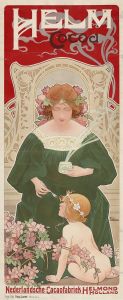
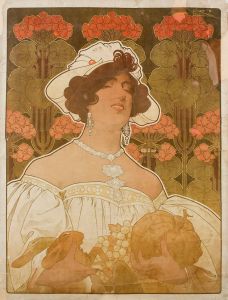
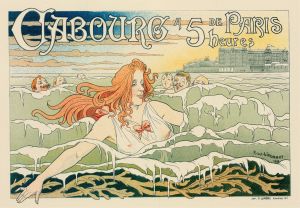
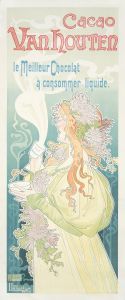
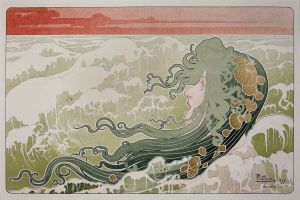
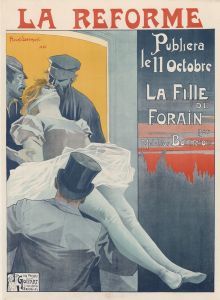
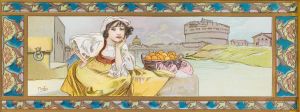
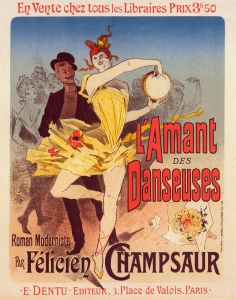
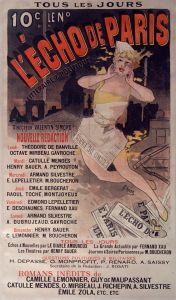
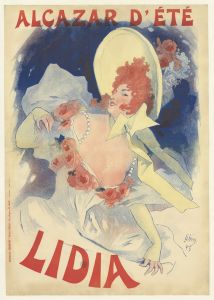
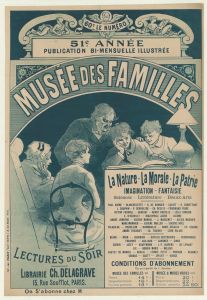
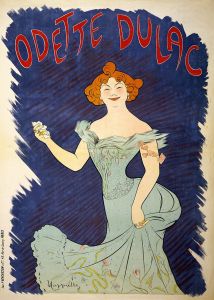
![The Inland Printer cover design [Valentine issue, February 1895].](/imgs/269674/s/will-bradley-the-inland-printer-cover-design-valentine-issue-february-1895-377fff20.jpg)